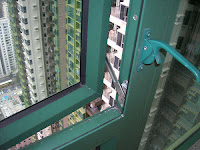【貓貓資料分類】 >> 【新聞資料類】
 As
anyone who has lost a loved one to a brain tumour knows, the disease can be
devastating.
As
anyone who has lost a loved one to a brain tumour knows, the disease can be
devastating.
So
headlines claiming that cats may be responsible for brain tumours – based on
limited and tentative evidence – are not only misleading but also deeply
insensitive to patients and their families.
Despite recent advances in
treating brain tumours, we’re still largely in the dark about the causes of
these cancers. This is partly because brain tumours are relatively rare, so
studying their causes is much harder than for more common cancers, such as
lung, bowel or breast.
Investigating the cause of a disease often
involves delving into large sets of data and look for patterns. Sometimes these
patterns turn out to be the cause itself – such as the well-known link between smoking and
lung cancer. Other times it’s something else – a relationship between two things that simply hints at an
underlying cause, such as the link between the age a woman starts her periods
and her risk of breast cancer (which is probably related to overall levels of hormones over
her lifetime).
Either
way, finding a link is just the first step on a long road: a promising clue,
which may – or may not – yield further clues on further investigation. History
is littered with examples of ideas that don’t hold up once further evidence is
gathered. But this doesn’t mean doing this research is pointless – rather,
that’s exactly how science works.
It was looking for these sorts of patterns – these ghostly signals
of causation or correlation – that led a team of French scientists to
investigate links between rates of a common infection, Toxoplasma gondii – which is spread by eating infected meat or by handling cat faeces – and rates of brain tumours.
Publishing their latest results in the Royal
Society’s journal, Biology Letters, they found that
countries that reported higher brain tumour rates also tended to have higher
rates of T. gondii infections.
So
what’s the real story behind the headlines? And should cat lovers be concerned?
What do we know
about brain tumours?
With all these different forms, it’s
impossible to assign one over-arching cause to ‘brain cancer’, and its likely
that they’re triggered by different things. But there are a few things we do know – increasing
age, certain inherited gene faults, and increased exposure to X-rays can all
increase the risk.
There’s
also some evidence to suggest that people with weak immune systems are more
likely to develop brain tumours. This is important and we’ll come back to it in
a minute.
As well as these definite risks, there have
also been a number of long-running, high-profile controversies over other
causes of brain cancer; most notably mobile phones, but
the spotlight has also shone on hair dyes, cured meats, and power lines. None
of these has been conclusively proven, and they’re unlikely to play a
significant role in the disease.
And finally, there have been hints of a link
between certain brain cancers and infections. Several studies have
found a link between glioblastoma multiforme and a common virus called cytomegalovirus , but others have found no link.
So what about this cat parasite?
Toxoplasma gondii is a parasitic infection that reproduces
in cats, but can infect other mammals, including humans, causing a condition
called toxoplasmosis. According to the NHS website:
Up to half of the UK population will have a
toxoplasmosis infection at some point in their lives. Once infected, a person
is then immune from further infection for life.
Toxoplasmosis can cause mild flu-like symptoms, such
as a high temperature and muscle aches, but these will usually pass without
treatment after a few weeks.
The
NHS link above is well worth a read for more info about the parasite and the
disease it causes.
What about the new research?
[The researchers] compared national
figures from 37 countries and found that brain cancers are more common in
countries where T.gondii infections
are more common. Brain cancer was 1.8 times more common in countries
where T.gondiiwas most common, than in those where it was virtually absent.
However, these countries also differ in
other important ways. Wealthier countries have more sophisticated technology
that is better able to detect brain cancer, as well as more accurate cancer
registries. To account for that, [the researchers] adjusted their results for
national wealth, along with latitude (T.gondii is more
common in the tropics), and cell phone use (which has been spuriously linked to
brain cancer). None of these adjustments changed the link between T.gondiiinfections
and brain cancer rates.
But, as Ed goes on to point out, the big problem with
drawing conclusions from this is that the study is an ‘ecological’ study, “one of the weakest designs in the hierarchy of
medical research”, and says nothing about the risks of individual people living
in the countries examined in the study.
So why did they find a link?
One obvious thing to say is that it’s equally plausible that brain
tumours cause an increase in T. gondii infections
– i.e. the exact opposite of what the media reported.
As we
said above, brain tumours are more common in people with weakened immune
systems. These people could just be more susceptible to parasitic infections,
which would neatly explain the link.
It’s also possible that, as with reproductive
history and breast cancer, the infection is a ‘marker’ for something else.
After all, millions of people in the UK have been infected with T. gondii, yet fewer than 5,000 people each year develop a brain tumour. Even if the link stands up to future
research there would have to be another factor at play – possibly genetics, or maybe another
infection.
A word about the headlines
As
we’ve seen, this is a preliminary expedition into the relatively uncharted
territory of brain tumour risk. Understanding what causes this varied set of
cancers is a problem that needs urgent attention, but because of the
complexities of the cancers – and their relative rarity – progress is slow and
painstaking.
This
research paper builds on previous studies, but is categorically not a definite
link by any means. But reading many of the news reports, you would be forgiven
for thinking the science was more certain than it is.
For
example, the media’s claim that infected cats ‘could almost double the risk’ of
brain tumours is plain wrong. The ‘doubling’ (actually a 1.8-fold increase)
refers to the difference between nations, not between people with and without
cats.
But
more importantly, pointing the finger at the family pet over something as
heart-wrenching as a brain tumour, in our view, fundamentally misrepresents the
state of the evidence, and does a grave disservice to people worried about why
they or their loved ones have the disease.
For the record, here’s the statement we issued to one
media outlet (at their request) last night, but which didn’t even make the “19th paragraph”.
“As the researchers admit themselves, this
study does not prove a link between T. gondii infection and brain cancer – it merely highlights a statistical link
that requires further investigation. Cat lovers should not be at all alarmed by
these findings.”
The
idea of ‘cancer-causing cats’ makes a great headline – but we question the
decision to cover the story in this way, and fail to see how this helps cancer
patients and their friends and relatives make sense of this terrible disease.
Reference:
Thomas, F., Lafferty, K., Brodeur, J.,
Elguero, E., Gauthier-Clerc, M., & Misse, D. (2011). Incidence of adult
brain cancers is higher in countries where the protozoan parasite Toxoplasma
gondii is common Biology Letters DOI: 10.1098/rsbl.2011.0588


















































